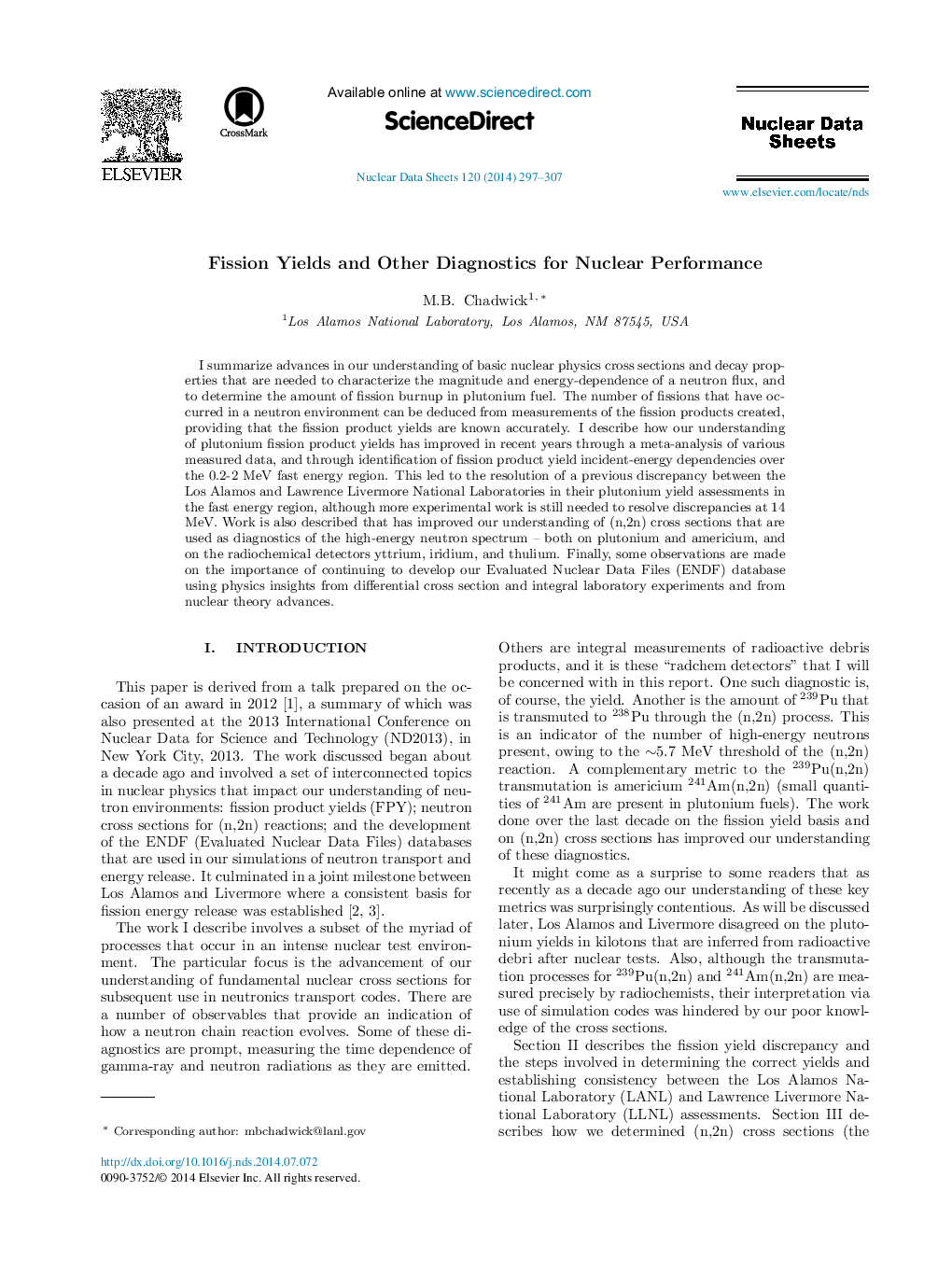| Article ID | Journal | Published Year | Pages | File Type |
|---|---|---|---|---|
| 1834700 | Nuclear Data Sheets | 2014 | 11 Pages |
I summarize advances in our understanding of basic nuclear physics cross sections and decay properties that are needed to characterize the magnitude and energy-dependence of a neutron flux, and to determine the amount of fission burnup in plutonium fuel. The number of fissions that have occurred in a neutron environment can be deduced from measurements of the fission products created, providing that the fission product yields are known accurately. I describe how our understanding of plutonium fission product yields has improved in recent years through a meta-analysis of various measured data, and through identification of fission product yield incident-energy dependencies over the 0.2-2 MeV fast energy region. This led to the resolution of a previous discrepancy between the Los Alamos and Lawrence Livermore National Laboratories in their plutonium yield assessments in the fast energy region, although more experimental work is still needed to resolve discrepancies at 14 MeV. Work is also described that has improved our understanding of (n,2n) cross sections that are used as diagnostics of the high-energy neutron spectrum – both on plutonium and americium, and on the radiochemical detectors yttrium, iridium, and thulium. Finally, some observations are made on the importance of continuing to develop our Evaluated Nuclear Data Files (ENDF) database using physics insights from differential cross section and integral laboratory experiments and from nuclear theory advances.
